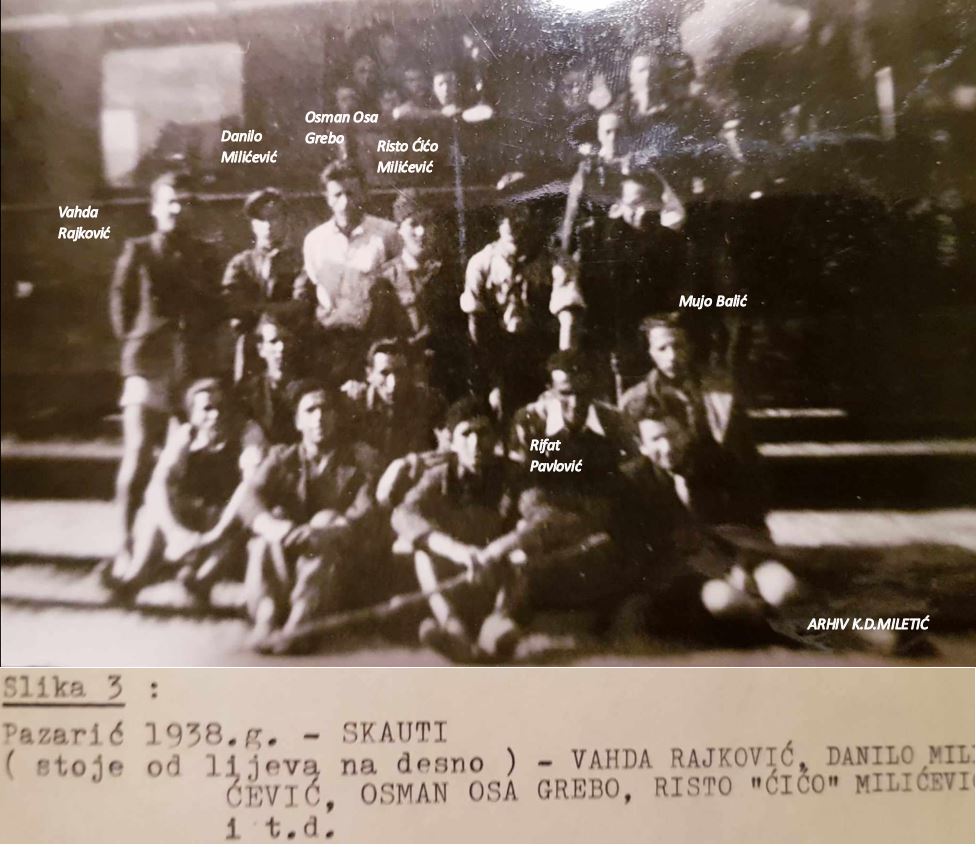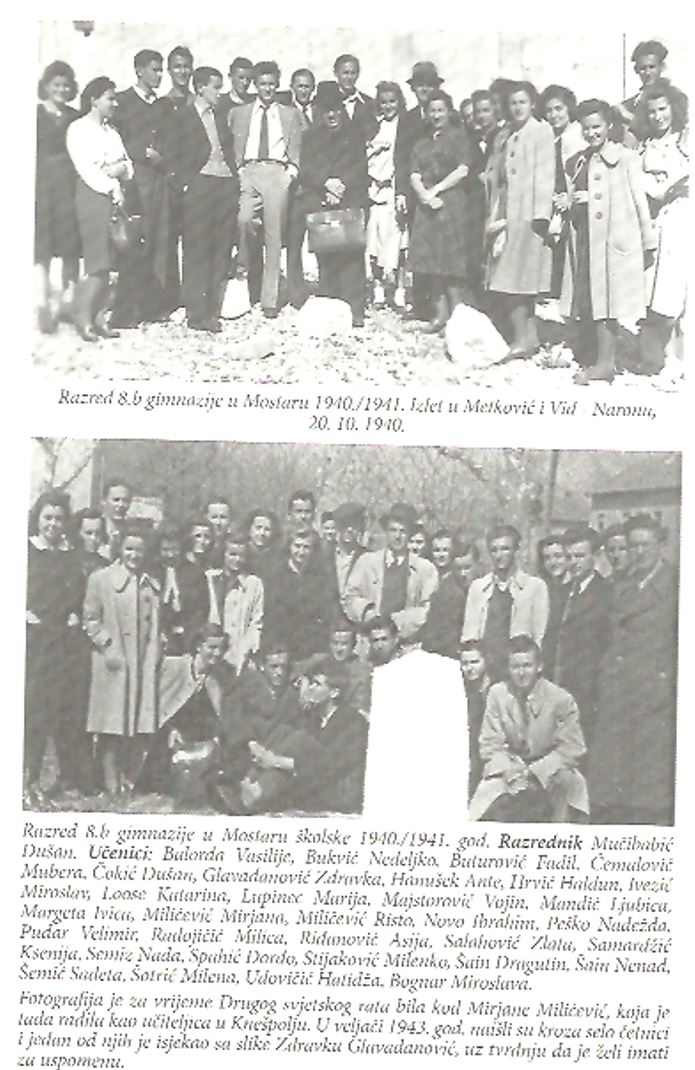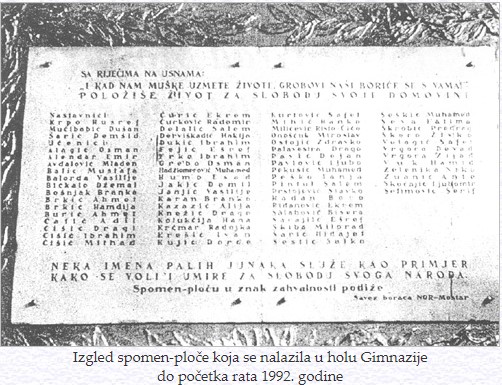
brochure "Partizanski spomenik u Mostaru" (1980)
book “Spomenica Mostara 1941-1945.”
another document or proof of the memorial stone (e.g., a photograph).
Risto V. MILIĆEVIĆ
RISTO MILIĆEVIĆ ĆIĆO, son of VOJIN, born on April 9, 1921, in Mostar. Completed Gymnasium, a football player for “Velež.” Member of SKOJ since 1938 and KPJ since 1940. One of the “senior” comrades who held weekly lectures for SKOJ members on current topics. He was part of a group of Mostar youth volunteers during the April War but was sent back after five days due to the capitulation. In the summer of 1941, during political work in Eastern Herzegovina, he was arrested by the Ustaše near Stolac but managed to escape execution. He went out of Mostar again in March 1942 to Eastern Herzegovina in the 1st Herzegovina Shock Battalion. A fighter and youth leader. He was killed during the Chetnik coup in May 1942 in Zvjerina. He was captured during an attack on a partisan hospital, tortured, and killed. He was killed on the night of May 29/30, 1942, and thrown into the Vidoška Pit near the village of Morče.
EXCERPTS FROM LITERATURE:
On the April War: “In the last truck, I see Fadil in a white coat, his comrades Ibrica Alikalfić, Čićo Milićević, Haldun Hrvić, Sulo Mehmedbašić, Ante Zelenika, almost the entire lineup of ‘Velež’ first team. I hear the song-oath of Mostar’s youth to the beloved city: ‘…We won’t let our land be trampled by the fascists… We would rather die than give away our land!’ Unfortunately, they returned from the battlefront in Montenegro after five days. (…) The front collapsed under the attacks of German and Italian armies.”
About the death: “The hospital in Zvijerina was organizationally independent and complete with its own economy, with 4-5 nurses and everything necessary for its functioning in those conditions… Unfortunately, our relatively well-organized hospital did not have a long life… After a few days, the Chetniks attacked our hospital. There were battles around the hospital throughout the day. It was the target of the attack, and in the evening, we were surrounded and captured. Among the other wounded, Milija Stanišić was captured in the hospital. I quickly removed the insignia of the political commissar of the unit from his sleeve, so the Chetniks passed by him as if he were an ordinary fighter, and that’s how he escaped certain death. At the same time, Rade Pravica, Jovo Ljubibratić, Risto-Ćićo Milićević, the youth leader from Mostar, and Dušan Grk, who managed to escape from prison that same evening, were also captured. We sent two young nurses to distract the guard, which Dušan took advantage of and escaped. The Chetniks brutally tortured the youth leader Ćićo. It was horrifying to hear his cries… On the night of May 29/30, 1942, they were taken and thrown into the Vidoška Pit: Risto-Ćićo Milićević, Husref Ćišić and Husref Krpo from Mostar, Aka Selimović and Sejfudin Selimović from Bileća, and Hasiba Ramović and Aka Kazazić from Nevesinje.”
Risto’s name was recorded on a memorial plaque in Mostar Gymnasium after the war. The plaque disappeared without a trace during the events of the war in 1992-1995.
https://poskok.info/mostarke-u-doba-okupacije-sloboda-nije-stigla-iz-bajke/; http://www.most.ba/091/015.aspx; http://rsdvelezmostar.blogspot.com/p/fk-velez.html ; Seferović, Mensur (1957): „Tajna partijske ćelije“, Sarajevo; grupa autora (1961): Hercegovina u NOB 1. dio, Beograd, Vojno delo; Džemil Šarac, članak „Sa Mostarcima“, Hercegovina br 9, str 221; grupa autora: Spomenica Mostara 1941-1945; Buturović, Ferid (2016): Kuća mostarskog kadije, sjećanja skojevca – ilegalca i partizana, Sarajevo.
Photo of the memorial plaque: S. Demirović.
Do you have more information about this fighter? Share your stories and photographs. Let's keep the memory alive!





